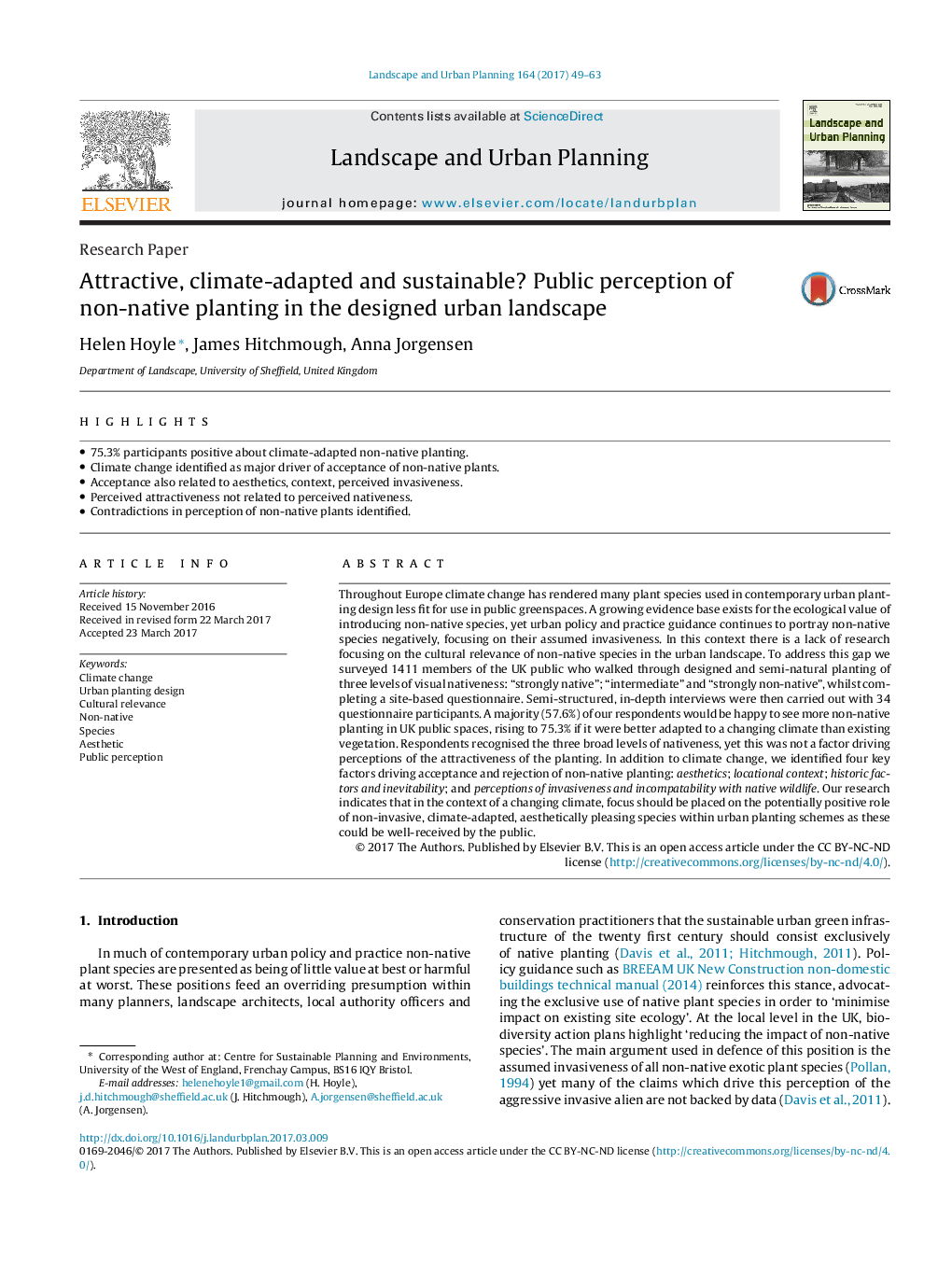| Article ID | Journal | Published Year | Pages | File Type |
|---|---|---|---|---|
| 5115012 | Landscape and Urban Planning | 2017 | 15 Pages |
Abstract
Throughout Europe climate change has rendered many plant species used in contemporary urban planting design less fit for use in public greenspaces. A growing evidence base exists for the ecological value of introducing non-native species, yet urban policy and practice guidance continues to portray non-native species negatively, focusing on their assumed invasiveness. In this context there is a lack of research focusing on the cultural relevance of non-native species in the urban landscape. To address this gap we surveyed 1411 members of the UK public who walked through designed and semi-natural planting of three levels of visual nativeness: “strongly native”; “intermediate” and “strongly non-native”, whilst completing a site-based questionnaire. Semi-structured, in-depth interviews were then carried out with 34 questionnaire participants. A majority (57.6%) of our respondents would be happy to see more non-native planting in UK public spaces, rising to 75.3% if it were better adapted to a changing climate than existing vegetation. Respondents recognised the three broad levels of nativeness, yet this was not a factor driving perceptions of the attractiveness of the planting. In addition to climate change, we identified four key factors driving acceptance and rejection of non-native planting: aesthetics; locational context; historic factors and inevitability; and perceptions of invasiveness and incompatability with native wildlife. Our research indicates that in the context of a changing climate, focus should be placed on the potentially positive role of non-invasive, climate-adapted, aesthetically pleasing species within urban planting schemes as these could be well-received by the public.
Related Topics
Life Sciences
Agricultural and Biological Sciences
Ecology, Evolution, Behavior and Systematics
Authors
Helen Hoyle, James Hitchmough, Anna Jorgensen,
